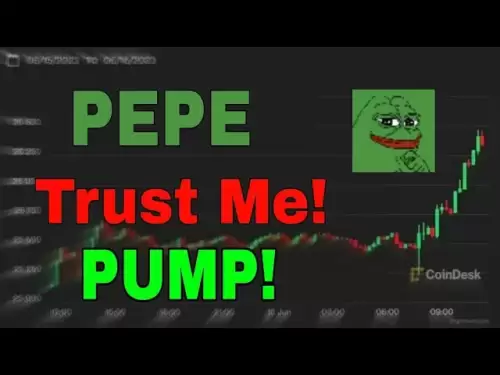-
 Bitcoin
Bitcoin $104,993.3325
-0.73% -
 Ethereum
Ethereum $2,615.1646
0.66% -
 Tether USDt
Tether USDt $1.0005
-0.01% -
 XRP
XRP $2.2146
-1.75% -
 BNB
BNB $664.2593
0.58% -
 Solana
Solana $154.6050
-0.48% -
 USDC
USDC $0.9998
0.00% -
 Dogecoin
Dogecoin $0.1892
-2.16% -
 TRON
TRON $0.2744
1.44% -
 Cardano
Cardano $0.6699
-1.77% -
 Hyperliquid
Hyperliquid $35.4343
-2.29% -
 Sui
Sui $3.2021
-1.53% -
 Chainlink
Chainlink $13.8967
-1.69% -
 Avalanche
Avalanche $20.3237
-3.96% -
 Stellar
Stellar $0.2681
-1.99% -
 UNUS SED LEO
UNUS SED LEO $9.0370
1.90% -
 Bitcoin Cash
Bitcoin Cash $401.4236
-0.48% -
 Toncoin
Toncoin $3.1724
-0.49% -
 Shiba Inu
Shiba Inu $0.0...01284
-1.43% -
 Hedera
Hedera $0.1679
-2.63% -
 Litecoin
Litecoin $88.3244
-1.30% -
 Polkadot
Polkadot $4.0382
-2.32% -
 Ethena USDe
Ethena USDe $1.0011
-0.01% -
 Monero
Monero $314.4028
-8.91% -
 Bitget Token
Bitget Token $4.7689
-0.66% -
 Dai
Dai $0.9998
-0.01% -
 Pepe
Pepe $0.0...01198
-2.44% -
 Pi
Pi $0.6486
-0.17% -
 Aave
Aave $264.8969
0.19% -
 Uniswap
Uniswap $6.3455
-4.44%
How does WMA avoid overfitting? Do the parameters need to be adjusted frequently?
WMA helps avoid overfitting in crypto trading with its simplicity and responsiveness to recent data, requiring minimal parameter adjustments.
May 26, 2025 at 11:01 am
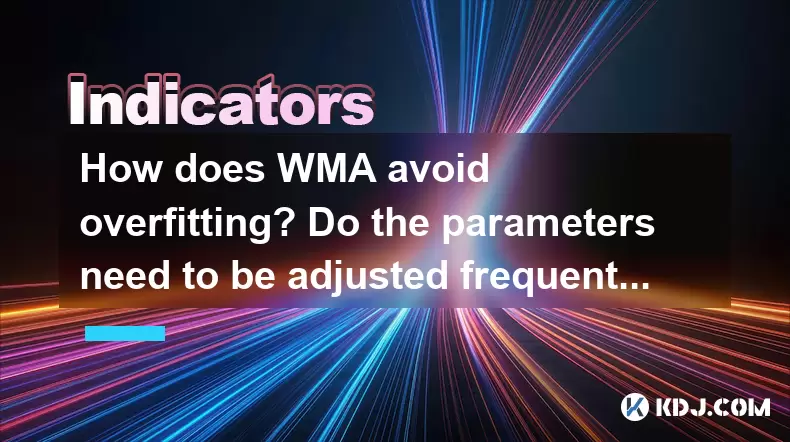
Introduction to WMA in Cryptocurrency Trading
Weighted Moving Average (WMA) is a popular technical indicator used in cryptocurrency trading to smooth out price data and identify trends. It assigns greater importance to more recent data points, making it more responsive to new information than a Simple Moving Average (SMA). One of the key concerns with using any moving average, including WMA, is the risk of overfitting. Overfitting occurs when a model is too closely tailored to historical data, which can lead to poor performance in real-world trading scenarios. This article explores how WMA avoids overfitting and whether its parameters need frequent adjustments.
Understanding Overfitting in Cryptocurrency Trading
Overfitting in the context of cryptocurrency trading refers to a model that performs exceptionally well on historical data but fails to generalize to new, unseen data. This can happen when a trading strategy is excessively tuned to past market conditions, capturing noise rather than underlying trends. In the volatile world of cryptocurrencies, where market dynamics can shift rapidly, overfitting poses a significant risk. A strategy that overfits could lead to substantial losses if the market behaves differently than expected.
How WMA Avoids Overfitting
WMA inherently mitigates the risk of overfitting through its design. Unlike more complex models that might include numerous variables and parameters, WMA relies on a straightforward calculation that gives more weight to recent prices. This simplicity helps in several ways:
- Reduced Complexity: By focusing on a single, clear metric, WMA avoids the pitfalls of overfitting that can arise from overly complicated models.
- Responsive to Recent Data: The weighting system in WMA ensures that the indicator reacts more quickly to recent price changes, which helps it stay relevant in fast-moving markets like cryptocurrencies.
- Avoidance of Noise: While WMA is sensitive to recent price movements, it still averages these over a period, which helps to filter out short-term noise that could lead to overfitting.
The Role of Parameter Selection in WMA
The primary parameter in WMA is the period length, which determines how many data points are included in the calculation. The choice of this parameter can affect the indicator's performance, but it does not require frequent adjustments. Here’s how to approach parameter selection:
- Choosing the Period Length: The period length should be chosen based on the trader’s time horizon and the specific cryptocurrency being traded. Shorter periods make the WMA more sensitive to price changes, suitable for short-term trading, while longer periods provide a smoother line, better for long-term trends.
- Testing Different Periods: Traders should test different period lengths on historical data to find a balance that captures trends without overfitting. This can be done using backtesting tools available in many trading platforms.
- Adjusting Parameters: While the initial parameter selection is important, frequent adjustments are not necessary. WMA is designed to be robust across different market conditions, and constant tweaking can lead to overfitting. Instead, traders should monitor the indicator’s performance over time and make adjustments only if there is a clear need.
Practical Application of WMA in Trading
To apply WMA effectively in cryptocurrency trading, follow these steps:
- Select a Cryptocurrency and Timeframe: Decide which cryptocurrency and timeframe you are interested in trading. For example, you might choose Bitcoin (BTC) and a daily timeframe.
- Choose the WMA Period: Based on your trading strategy, select an appropriate period length for the WMA. A common choice might be 20 days for a medium-term trend.
- Plot the WMA on a Chart: Use a trading platform that supports technical indicators to plot the WMA on your chosen chart. Ensure the WMA is correctly configured with the selected period length.
- Analyze the WMA: Look for crossovers between the price and the WMA, or between different WMAs, to identify potential buy or sell signals. For example, a price crossing above the WMA might indicate a bullish trend, while a price crossing below might signal a bearish trend.
- Combine with Other Indicators: To further reduce the risk of overfitting, consider using WMA in conjunction with other indicators like the Relative Strength Index (RSI) or the Moving Average Convergence Divergence (MACD).
Monitoring and Adjusting WMA
While frequent adjustments to WMA parameters are not recommended, it is important to monitor the indicator’s performance over time. Here’s how to do it effectively:
- Regular Review: Periodically review the performance of your WMA-based trading strategy. This can be done by comparing the strategy’s outcomes against a benchmark or by analyzing specific trades.
- Market Conditions: Keep an eye on broader market conditions. If there are significant changes in market volatility or trends, it might be worth re-evaluating the WMA period length.
- Avoid Over-Optimization: Resist the temptation to constantly adjust the WMA parameters based on recent performance. Over-optimization can lead to overfitting, as it tries to fit the model too closely to recent data.
Conclusion
WMA is a valuable tool in cryptocurrency trading that helps avoid overfitting through its simplicity and responsiveness to recent data. The choice of period length is crucial but does not require frequent adjustments. By following the steps outlined above, traders can effectively use WMA to identify trends and make informed trading decisions.
Frequently Asked Questions
Q: Can WMA be used in conjunction with other moving averages like EMA or SMA?
A: Yes, WMA can be used alongside other moving averages like Exponential Moving Average (EMA) and Simple Moving Average (SMA). Combining different types of moving averages can provide a more comprehensive view of market trends. For instance, a trader might use a short-term EMA with a longer-term WMA to identify both short-term fluctuations and long-term trends.
Q: How does WMA perform in highly volatile cryptocurrency markets?
A: WMA is designed to be responsive to recent price changes, which can be beneficial in highly volatile markets. However, its performance can vary depending on the chosen period length. In extremely volatile conditions, a shorter period length might be more effective, as it will react more quickly to price movements. Conversely, a longer period length can help smooth out volatility and provide a clearer view of the underlying trend.
Q: Is WMA suitable for all types of cryptocurrency traders?
A: WMA can be suitable for various types of cryptocurrency traders, depending on their trading style and objectives. Short-term traders might prefer shorter period lengths to capture quick price movements, while long-term investors might opt for longer periods to identify sustained trends. However, traders with more complex strategies might find WMA too simplistic and may prefer more advanced indicators.
Q: Can WMA be used for automated trading strategies?
A: Yes, WMA can be integrated into automated trading strategies. Many trading platforms and algorithmic trading software support the use of WMA as part of their indicator libraries. Traders can set up rules based on WMA crossovers or other signals to execute trades automatically. However, it's important to backtest these strategies thoroughly to ensure they perform well across different market conditions and avoid overfitting.
Disclaimer:info@kdj.com
The information provided is not trading advice. kdj.com does not assume any responsibility for any investments made based on the information provided in this article. Cryptocurrencies are highly volatile and it is highly recommended that you invest with caution after thorough research!
If you believe that the content used on this website infringes your copyright, please contact us immediately (info@kdj.com) and we will delete it promptly.
- HCW9206 reagent has also been filed with the US Food and Drug Administration.
- 2025-06-05 05:50:12
- MIND of Pepe, Possibly the Best AI Agent Crypto of 2025, Has Just Passed $9M in Presale
- 2025-06-05 05:50:12
- Today's Top Crypto Gainers - WalletConnect (WCT), Chia (XCH), Solaxy (SOLX), Kaia (KAIA), and Cronos (CRO)
- 2025-06-05 05:45:12
- Dogecoin Regains Public Attention Through Its Price Surge, Which Results from Technical Indicators and Major Market Events
- 2025-06-05 05:45:12
- Coinbase is Joining the S&P 500 — a Milestone Moment for Crypto and the American Economy
- 2025-06-05 05:40:15
- Remittix (RTX): Is the New PayFi Token Going to 100x This Cycle?
- 2025-06-05 05:40:15
Related knowledge
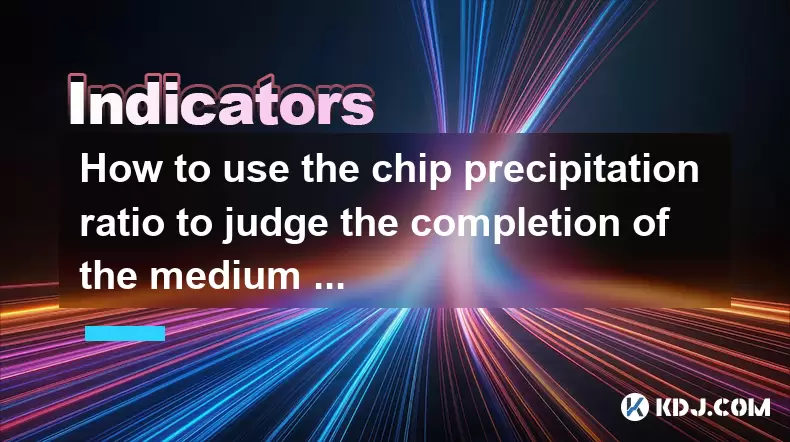
How to use the chip precipitation ratio to judge the completion of the medium and long-term bottom construction?
Jun 04,2025 at 03:36am
The chip precipitation ratio is a crucial metric used by investors to assess the accumulation of chips (or shares) at different price levels over time. This ratio helps in understanding the distribution of chips and can be a powerful tool for determining the completion of medium and long-term bottom construction in the cryptocurrency market. By analyzin...
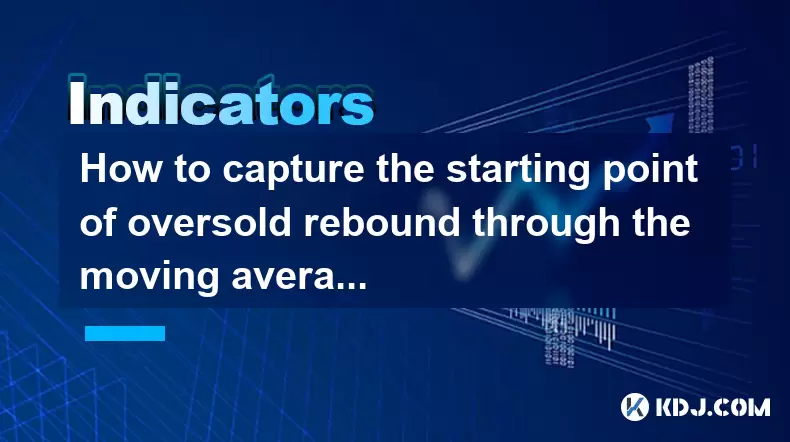
How to capture the starting point of oversold rebound through the moving average gravity reversal strategy?
Jun 04,2025 at 01:01pm
The moving average gravity reversal strategy is a sophisticated approach used by traders to identify potential entry points for buying cryptocurrencies when they are considered oversold. This strategy leverages the concept of moving averages to pinpoint moments when a cryptocurrency might be poised for a rebound. In this article, we will delve into the ...
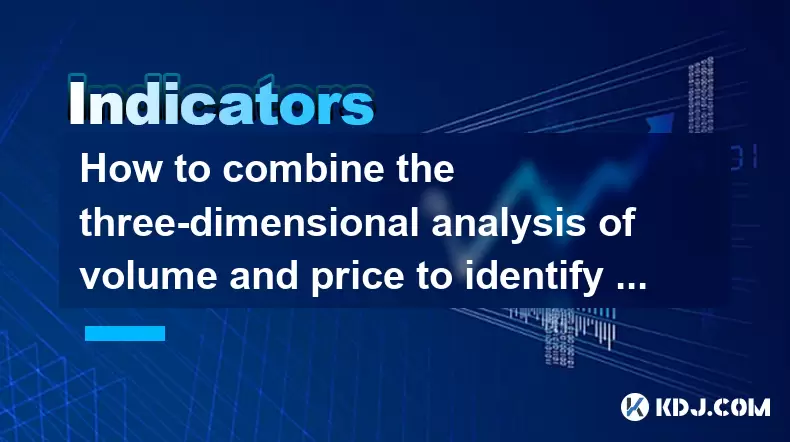
How to combine the three-dimensional analysis of volume and price to identify the golden buying point of breakthrough and retracement?
Jun 03,2025 at 11:42pm
In the dynamic world of cryptocurrencies, identifying the optimal buying points is crucial for maximizing profits and minimizing risks. One effective method to achieve this is by combining three-dimensional analysis of volume and price to pinpoint the golden buying points during breakouts and retracements. This article will delve into how to use this ap...
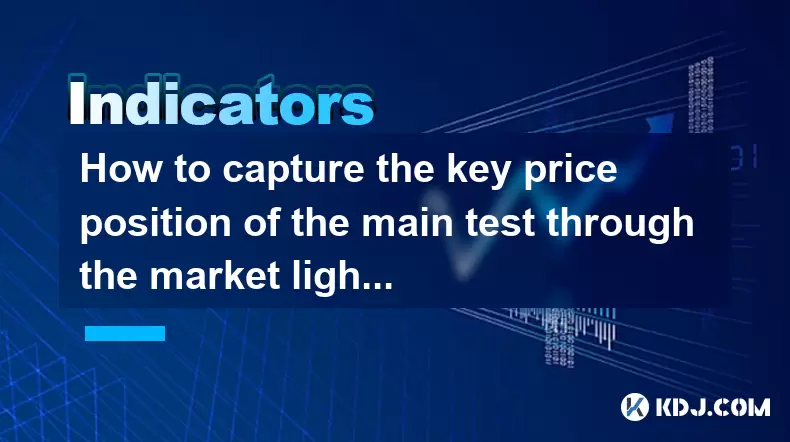
How to capture the key price position of the main test through the market lightning chart?
Jun 02,2025 at 06:07pm
Introduction to Market Lightning ChartThe market lightning chart is a powerful tool used by cryptocurrency traders to visualize price movements and identify key price positions. This chart type provides a detailed view of market activity, allowing traders to spot trends, reversals, and other significant price levels quickly. By understanding how to use ...
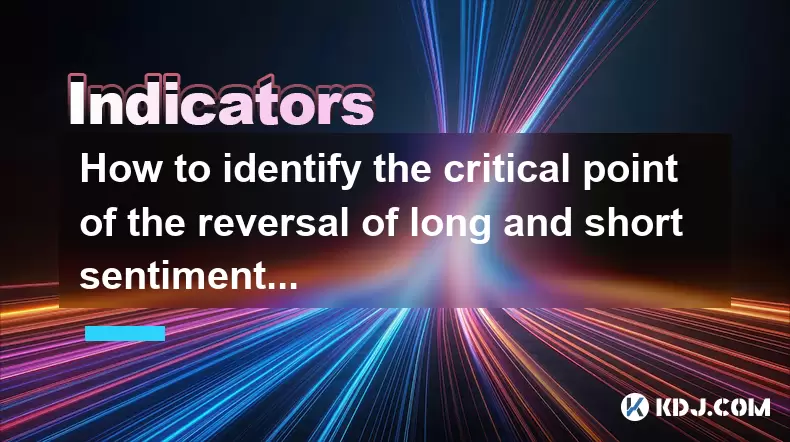
How to identify the critical point of the reversal of long and short sentiment through the K-line reverse package combination?
Jun 01,2025 at 03:36pm
In the world of cryptocurrency trading, understanding the sentiment of the market is crucial for making informed decisions. One effective method to gauge the potential reversal of long and short sentiment is through the analysis of K-line reverse package combinations. This technique involves studying specific patterns and formations within the K-line ch...
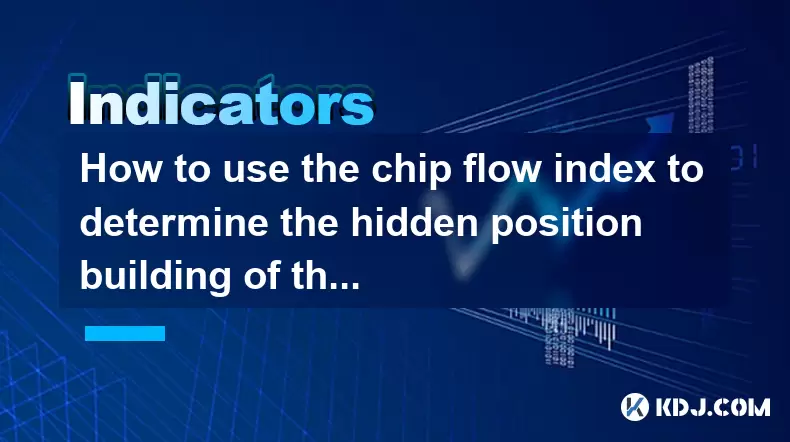
How to use the chip flow index to determine the hidden position building of the main funds?
Jun 01,2025 at 06:57pm
The Chip Flow Index (CFI), often referred to as the Volume Weighted Average Price (VWAP), is a crucial tool used by traders and investors to analyze the behavior of major funds in the cryptocurrency market. Understanding how to use the CFI can provide insights into the hidden position building of these main funds, which is essential for making informed ...

How to use the chip precipitation ratio to judge the completion of the medium and long-term bottom construction?
Jun 04,2025 at 03:36am
The chip precipitation ratio is a crucial metric used by investors to assess the accumulation of chips (or shares) at different price levels over time. This ratio helps in understanding the distribution of chips and can be a powerful tool for determining the completion of medium and long-term bottom construction in the cryptocurrency market. By analyzin...

How to capture the starting point of oversold rebound through the moving average gravity reversal strategy?
Jun 04,2025 at 01:01pm
The moving average gravity reversal strategy is a sophisticated approach used by traders to identify potential entry points for buying cryptocurrencies when they are considered oversold. This strategy leverages the concept of moving averages to pinpoint moments when a cryptocurrency might be poised for a rebound. In this article, we will delve into the ...

How to combine the three-dimensional analysis of volume and price to identify the golden buying point of breakthrough and retracement?
Jun 03,2025 at 11:42pm
In the dynamic world of cryptocurrencies, identifying the optimal buying points is crucial for maximizing profits and minimizing risks. One effective method to achieve this is by combining three-dimensional analysis of volume and price to pinpoint the golden buying points during breakouts and retracements. This article will delve into how to use this ap...

How to capture the key price position of the main test through the market lightning chart?
Jun 02,2025 at 06:07pm
Introduction to Market Lightning ChartThe market lightning chart is a powerful tool used by cryptocurrency traders to visualize price movements and identify key price positions. This chart type provides a detailed view of market activity, allowing traders to spot trends, reversals, and other significant price levels quickly. By understanding how to use ...

How to identify the critical point of the reversal of long and short sentiment through the K-line reverse package combination?
Jun 01,2025 at 03:36pm
In the world of cryptocurrency trading, understanding the sentiment of the market is crucial for making informed decisions. One effective method to gauge the potential reversal of long and short sentiment is through the analysis of K-line reverse package combinations. This technique involves studying specific patterns and formations within the K-line ch...

How to use the chip flow index to determine the hidden position building of the main funds?
Jun 01,2025 at 06:57pm
The Chip Flow Index (CFI), often referred to as the Volume Weighted Average Price (VWAP), is a crucial tool used by traders and investors to analyze the behavior of major funds in the cryptocurrency market. Understanding how to use the CFI can provide insights into the hidden position building of these main funds, which is essential for making informed ...
See all articles
























